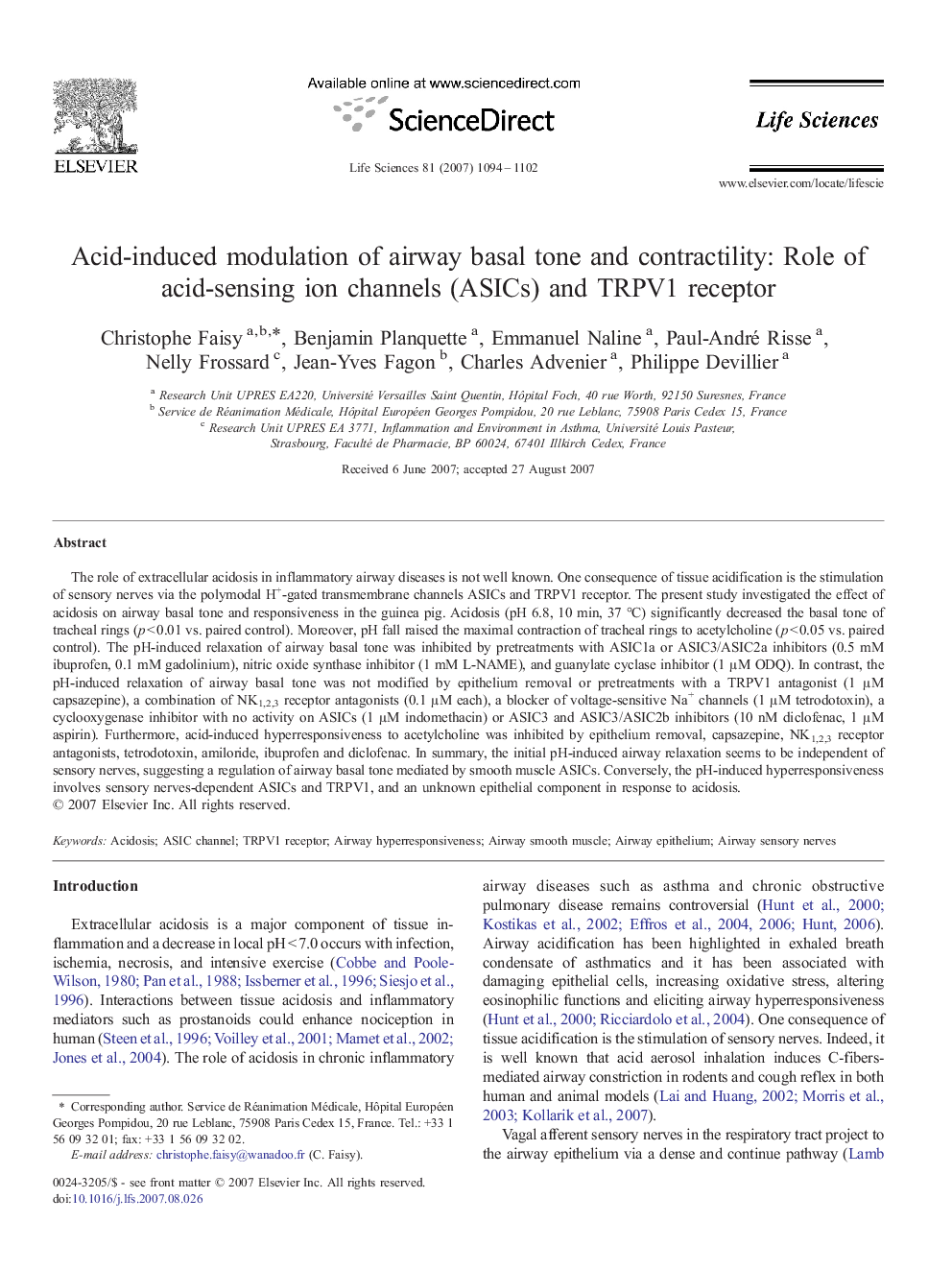| Article ID | Journal | Published Year | Pages | File Type |
|---|---|---|---|---|
| 2554049 | Life Sciences | 2007 | 9 Pages |
The role of extracellular acidosis in inflammatory airway diseases is not well known. One consequence of tissue acidification is the stimulation of sensory nerves via the polymodal H+-gated transmembrane channels ASICs and TRPV1 receptor. The present study investigated the effect of acidosis on airway basal tone and responsiveness in the guinea pig. Acidosis (pH 6.8, 10 min, 37 °C) significantly decreased the basal tone of tracheal rings (p < 0.01 vs. paired control). Moreover, pH fall raised the maximal contraction of tracheal rings to acetylcholine (p < 0.05 vs. paired control). The pH-induced relaxation of airway basal tone was inhibited by pretreatments with ASIC1a or ASIC3/ASIC2a inhibitors (0.5 mM ibuprofen, 0.1 mM gadolinium), nitric oxide synthase inhibitor (1 mM L-NAME), and guanylate cyclase inhibitor (1 μM ODQ). In contrast, the pH-induced relaxation of airway basal tone was not modified by epithelium removal or pretreatments with a TRPV1 antagonist (1 μM capsazepine), a combination of NK1,2,3 receptor antagonists (0.1 μM each), a blocker of voltage-sensitive Na+ channels (1 μM tetrodotoxin), a cyclooxygenase inhibitor with no activity on ASICs (1 μM indomethacin) or ASIC3 and ASIC3/ASIC2b inhibitors (10 nM diclofenac, 1 μM aspirin). Furthermore, acid-induced hyperresponsiveness to acetylcholine was inhibited by epithelium removal, capsazepine, NK1,2,3 receptor antagonists, tetrodotoxin, amiloride, ibuprofen and diclofenac. In summary, the initial pH-induced airway relaxation seems to be independent of sensory nerves, suggesting a regulation of airway basal tone mediated by smooth muscle ASICs. Conversely, the pH-induced hyperresponsiveness involves sensory nerves-dependent ASICs and TRPV1, and an unknown epithelial component in response to acidosis.
